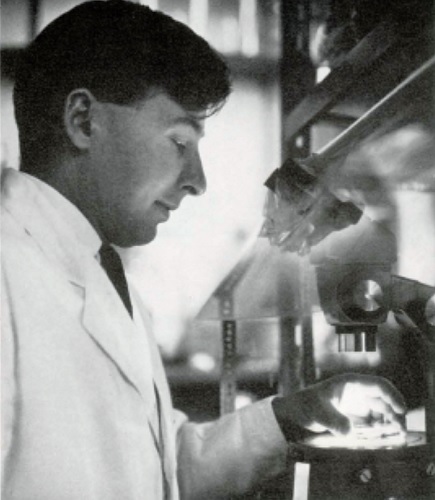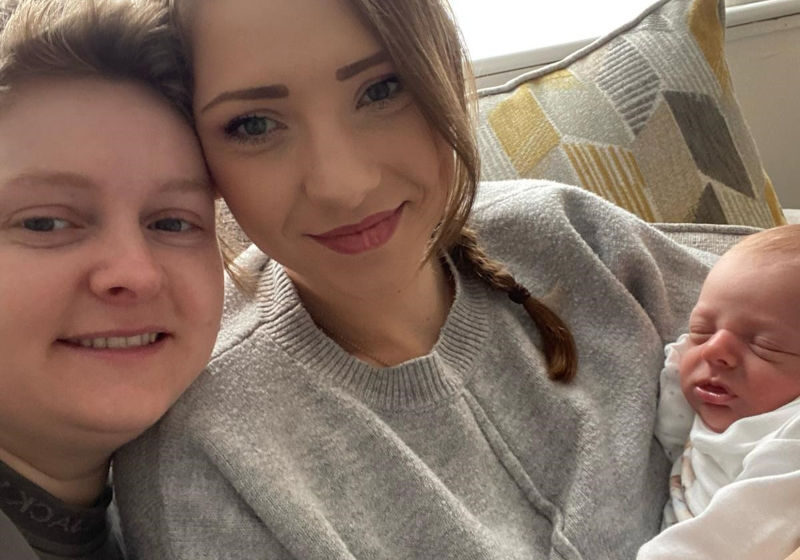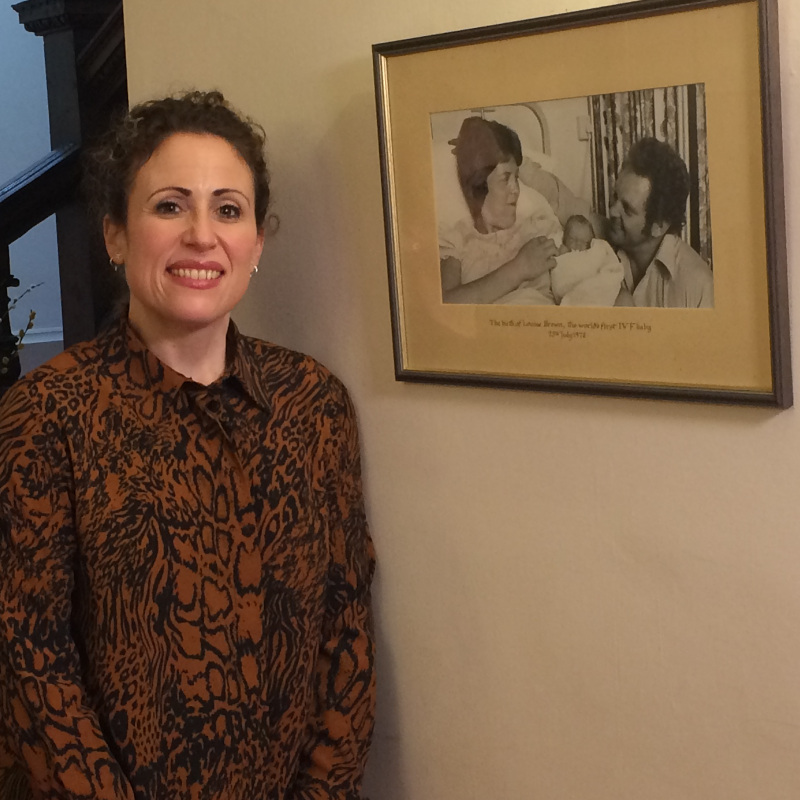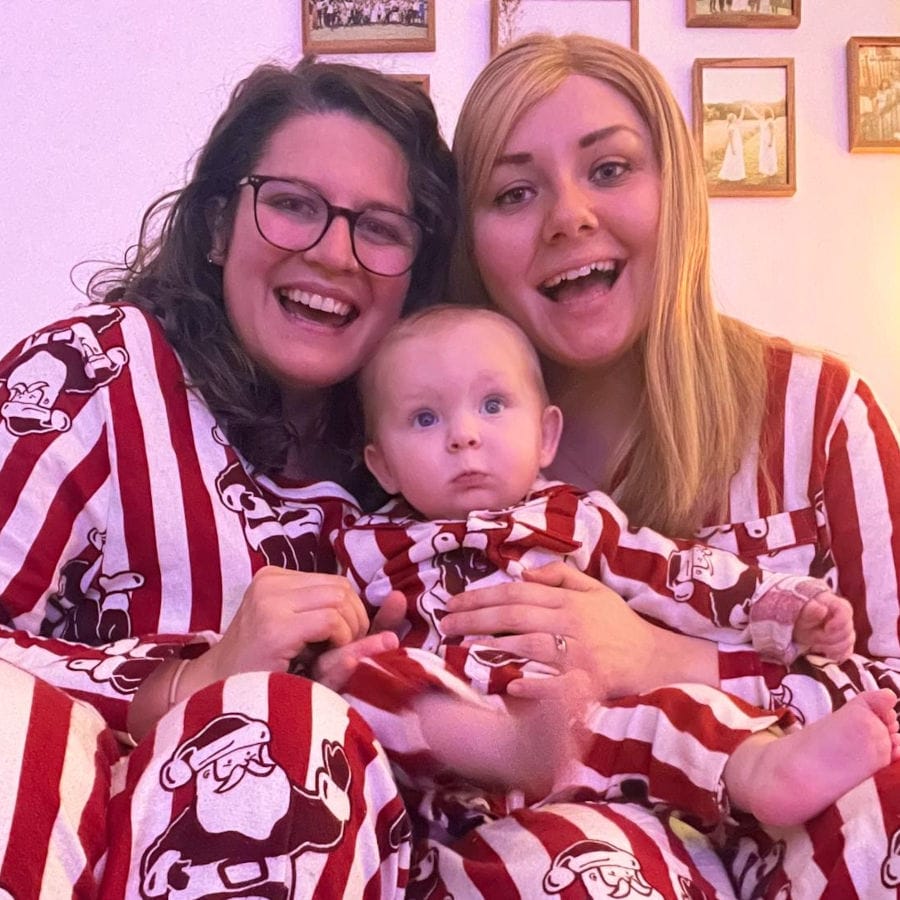If you are considering what to do with your frozen embryos in storage then we hope this post will be of help.
Natalie and her husband initially wanted a larger family. However, after successful fertility treatment at Bourn Hall gave them a much wanted little boy, they had a re-think. Taking into account their ages and work commitments, they made the decision not to have further treatment.
But they still had three frozen embryos in storage at Bourn Hall and, although they can be kept for ten years, a decision would need to be made about what to do with their frozen embryos.
When Natalie, editor of the Fertility Podcast, shared her dilemma on social media it created an immediate response. She realised that many people were in a limbo period, not moving on as they were stressing about what to do with their embryos.

So once the couple had made their decision, which was to donate their embryos to science, Natalie decided to go back to Bourn Hall to talk to fertility councillor Jackie Stewart who had helped them make the choice, and to Martyn Blayney, Director of Science about what happens to those embryos and why they are so precious.
In this video Natalie, Jackie and Martyn talk about the ‘most difficult decision’ she and her husband have had to make.
Options for frozen embryos
If you are not decided about further treatment then there is no pressure to do anything.
Storage is free of charge for the first year but after that time you will receive a letter requesting a storage fee. You can just renew and continue to store the embryos until you are ready to make a decision about the next step. This is not a decision that you need to make quickly or on your own, many people find it difficult to decide what to do with their frozen embryos.
Bourn Hall Clinic offers implications counselling with a fertility counsellor. This gives patients time to talk through the options, decide what is best for them and feel confident about their decision.
There are five main options for frozen embryos in storage:
– Use the embryos for your own treatment when you want to proceed
– Gift the embryos to another couple to enable them to have treatment
– Donate the embryos for use in scientific research to improve future treatment
– Continue to keep frozen embryos in storage for up to ten years (this is due to be extended to 55 years on July 1, 2022) and renew the storage fee
– Let them go, the embryos will be thawed and the cells cease to function
Treatment with frozen embryos
Frozen embryos can be used for further treatment; if the woman was 30 when the embryo was created it will remain the embryo of a 30 year old with the associated success rates, even if it is used for treatment many years later.
Bourn Hall provides a special Frozen Embryo Transfer (FET) Treatment Package, which includes: medical care, in-treatment tests and procedures, embryo transfer and follow-up consultation. This is significantly cheaper than full IVF as fewer drugs are required.
If you have embryos frozen as part of an NHS-funded cycle of IVF then you can also pay to have these used for FET.
Gift to another couple or individual
Some groups of patients, such as older women without a life partner or those with an inheritable condition, may require both donated eggs and sperm for treatment. Frozen embryos remove some of the uncertainty in treatment and may give these patients the chance of a baby.
A fertility counsellor can talk you through all the implications of this decision without you having to make a commitment.
Donation to science
The human egg and embryo is very different to that of other animals, so all the early work by the IVF pioneers Steptoe, Edwards and Purdy relied on donated eggs.
It was through the generosity of many women in the 1970s donating their eggs to scientific research that enabled the breakthrough with the first ‘test-tube’ baby Louise Brown.
One of the big challenges that researchers are working on at the moment is how the embryo implants into the lining of the womb; failure to implant is a common cause of miscarriage. By donating embryos to science you can support this type of research. You can see examples of current research.
The maximum time an embryo can be grown in the laboratory is 14 days, at which point the different cells are more obvious, but still resemble a mass of cells. Research is very tightly regulated and you will need to give consent if you wish to donate your embryos.
A fertility counsellor can talk you through this decision and explain the paperwork that is required. These papers are legal documents and are to ensure that you have given consent and are fully informed about the way the embryo will be used.
Allow to let go
If you have come to a decision not to have any further treatment, for whatever reason, then one of your options is to decide to let the embryos be thawed and perish naturally.
If you are unsure if this is the right option for you, talking the decision through with a counsellor may be helpful.
More information is available about support services.
More information about the options for frozen embryos in storage:
Frozen embryos can be used for further treatment; if the woman was 30 when the embryo was created it will remain the embryo of a 30 year old with the associated success rates, even if it is used for treatment many years later.
Bourn Hall provides a special Frozen Embryo Transfer (FET) Treatment Package, which includes: medical care, in-treatment tests and procedures, embryo transfer and follow-up consultation. This is significantly cheaper than full IVF as fewer drugs are required.
If you have embryos frozen as part of an NHS-funded cycle of IVF then you can also pay to have these used for FET. Full costs are available
Some groups of patients, such as older women without a life partner or those with an inheritable condition, may require both donated eggs and sperm for treatment. Frozen embryos remove some of the uncertainty in treatment and may give these patients the chance of a baby.
A fertility counsellor can talk you through all the implications of this decision without you having to make a commitment.

The human egg and embryo is very different to that of other animals, so all the early work by the IVF pioneers Steptoe, Edwards and Purdy relied on donated eggs.
It was through the generosity of many women in the 1970s donating their eggs to scientific research that enabled the breakthrough with the first ‘test-tube’ baby Louise Brown.
One of the big challenges that researchers are working on at the moment is how the embryo implants into the lining of the womb; failure to implant is a common cause of miscarriage. By donating embryos to science you can support this type of research. You can see examples of current research.
The maximum time an embryo can be grown in the laboratory is 14 days, at which point the different cells are more obvious, but still resemble a mass of cells. Research is very tightly regulated and you will need to give consent if you wish to donate your embryos.
A fertility counsellor can talk you through this decision and explain the paperwork that is required. These papers are legal documents and are to ensure that you have given consent and are fully informed about the way the embryo will be used.
If you have come to a decision not to have any further treatment, for whatever reason, then one of your options is to decide to let the embryos be thawed and perish naturally.
If you are unsure if this is the right option for you, talking the decision through with a counsellor may be helpful.
More information is available about support services.

Find out how can we help you
Book a consultation call with our team to find out how Bourn Hall can help you on your fertility journey
Latest articles
HFEA issues guidance about ‘Add-ons’ – additional treatments of benefit to some
Add-ons are optional treatments that may provide benefits to some groups of patients but do…
Egg freezing Key: considerations and how to interpret clinic success rates
Key takeaways If you’re not ready to become pregnant right now but would like to…
First Christmas as a family, thank you Bourn Hall!
“We spent many Christmases saying to each other ‘maybe next year we will have another…
Patient reviews you can trust
Genuine experiences from real patients. See why so many trust us with their fertility care.
“We went to an open evening at Bourn Hall Wickford and came away feeling really positive about the place. The staff were really friendly and the presentation was clear about the statistics regarding success rates and live birth rates; their data was very transparent. We came away feeling like we would really be looked after.”
Katy and Leigh are parents to Charlie after IVF
Patient 2023
“We chose to make an appointment at Bourn Hall Wickford because of the favourable reviews. When we got there and met the staff they were just so lovely, making us feel welcome and explaining to us what tests would need to be done and what our options were; we just thought ‘yes, let’s get the ball rolling!”
Jess and Fran are mums to Nathan after IVF with donor sperm
Patient 2023




